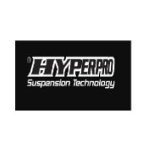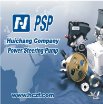-
Welcome to Auto Parts Forum
Whether you are a veteran automotive parts guru or just someone looking for some quick auto parts advice, register today and start a new topic in our forum. Registration is free and you can even sign up with social network platforms such as Facebook, X, and LinkedIn.
Australia Bike Steering Dampers
-
Similar Topics
-
By 1772668470
Installing a power steering pump involves several steps. It’s important to have the correct tools and follow safety precautions. Here’s a step-by-step guide to help you through the process:
Tools and Materials Needed:
New power steering pump
Power steering fluid
Wrench set
Screwdrivers
Pulley puller (if necessary)
Jack and jack stands
Drain pan
Safety glasses and gloves
Torque wrench
Steps to Install a Power Steering Pump:
-
By 1772668470
Hello every one, this is power steering pump factory in china.We have 17 years of manufacturing experience with high quality and competitive price, if you have interest ,pls feel free to contact us. call whats app:+86 18006521672 email:[email protected]
-
By Dorman Products
Steering and Suspension Knuckles | Counterperson Training from Dorman Training Center
-
By Counterman
Bryan Miller, vice president of product and category management at Arnold Motor Supply, has been elected chairman of the Alliance Commercial Vehicle and Heavy Duty (CVHD) steering committee for 2024.
The CVHD steering committee is a collection of Alliance CVHD membership with the purpose of providing guidance on vendor relationships, exclusive national branding and the developing national truck service program.
The Alliance CVHD program prides itself on industry-leading IT solutions to facilitate ease of business; expansive interchange and product lookups; B2B and B2C solutions; and ensuring truck-part suppliers and repair facilities are found online. The Alliance CVHD steering committee will offer guidance and new ideas that will steer the future of the program.
Miller will begin serving as chairman of the Alliance CVHD steering committee effective Jan. 1.
“This is a great opportunity for myself and the Alliance as a whole,” Miller said. “To be a part of something from the beginning is a privilege. The Alliance CVHD team has done a great job of starting this program and we at Arnold Motor Supply look forward to being a part of its growth and future success. We are just getting started, our goal is to make this the strongest CVHD program in the industry.”
Miller will work directly with other members of the steering committee, as well as the Alliance CVHD headquarters personnel led by Justin Hebert and Mario Gonzalez.
“We are delighted to have Bryan Miller taking the helm as chairman of the CVHD steering committee,” said Mario Gonzalez, Alliance CVHD program manager. “Bryan’s incredible success in growing the heavy-duty business at Arnold Motor Supply speaks volumes about his expertise. What sets Bryan apart is not just his professional achievements, but his genuine commitment to the Alliance’s CVHD program. His eagerness to share ideas, showcases a leader who not only believes in growth but actively nurtures it. With Bryan steering our committee, we are confident in the continued success of our CVHD program.”
Those interested in more information or specific program details and membership should contact Mario Gonzalez at [email protected] or visit
link hidden, please login to view. The post
link hidden, please login to view appeared first on link hidden, please login to view.
link hidden, please login to view
-





Recommended Posts
Join the conversation
You can post now and register later. If you have an account, sign in now to post with your account.
Note: Your post will require moderator approval before it will be visible.